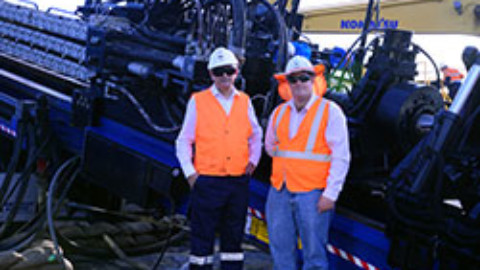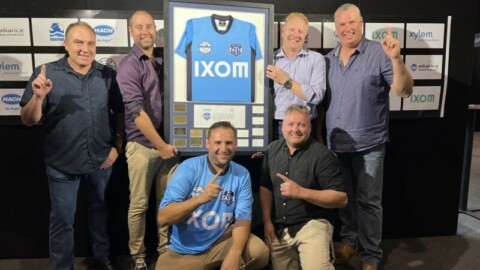Ensuring the continued supply of safe drinking water is at the forefront of business operations for water organisations across Australia. However, with the effects of our changing climate and traditional water sources drying up, organisations are having to investigate other water source options.
Water Corporation in Western Australia provides drinking water to Perth, Mandurah and more than 220 regional towns and communities throughout the state and has recently launched the first stage of its Groundwater Replenishment Scheme, the first of its kind in Australia.
Senior Technical Advisor of Membrane Treatment at Water Corporation, Dr Stacey Hamilton, provides technical and operational support on advanced water treatment processes state-wide,but she has also been involved with Water Corporation’s full-scale groundwater replenishment scheme for the past eight years.
Dr Hamilton will also be one of the key speakers at Wastewater Summit which is a feature of Waste Expo Australia, to be held in Melbourne on 23-24 October.
During the presentation, Dr Hamilton will outline, from concept to reality, the steps taken by Water Corporation to put together the groundwater replenishment scheme, beginning with the investigations as far back as 2004.
“With the effects of climate change, the corporation decided to look at other water source options and this included groundwater replenishment,” Dr Hamilton said.
“Water Corporation has a 50-year plan ‘Water Forever Whatever the Weather’ which includes increasing recycling, reducing use and developing new sources. Groundwater replenishment is included in this plan.”
Similar schemes have been used successfully in other parts of the world, such as Orange County in California, US, since the 1970s. Water recycling schemes are also used to supplement drinking water supplies in Singapore and in Windhoek, Namibia.
The benefits of groundwater replenishment are that it doesn’t rely on rainfall, it has the potential to recycle large volumes of water and enables equivalent volumes of groundwater to be abstracted from the aquifer, while reducing impacts to the environment or other water users.
Dr Hamilton will explain during her presentation that stringent systems, processes and regulations have been put in place to ensure groundwater replenishment does not put public health or the environment at risk.
“Both the Groundwater Replenishment Trial and Stage 1 of the full-scale scheme have been 100 per cent compliant for water quality,” Dr Hamilton said.
“As Australia’s first scheme, developing the regulatory framework, understanding the technical challenges and keeping the community engaged are all part of keeping the scheme compliant.”
Dr Hamilton has been involved in the design, construction, commissioning, approval and operation of Stage 1 and is currently assisting Stage 2 of the scheme.
Dr Hamilton’s presentation at Waste Expo Australia will help others understand the process and hopefully encourage them to investigate it for their own constituencies.
“The key message from the presentation will be the journey taken by the corporation to get where we are. Getting other utilities educated on the process and journey is important,” Dr Hamilton said.
“Being able to present on how we have successfully implemented a scheme allows other utilities to consider it.”
Dr Hamilton will commence at midday on day one of Waste Expo Australia presenting on the Wastewater Summit stage brought to you by EnviroConcepts. She will be joined across the two days by more than 100 speakers in three separate streams.
Waste Expo Australia will be held at the Melbourne Convention and Exhibition Centre and will be co-located with All-Energy Australia, Energy Efficiency Expo and ISSA Cleaning and Hygiene Expo, forming the nation’s most significant showcase for the waste, recycling, wastewater, renewable energy, energy efficiency and cleaning industries.
To register, visit www.wasteexpoaustralia.com.au

















